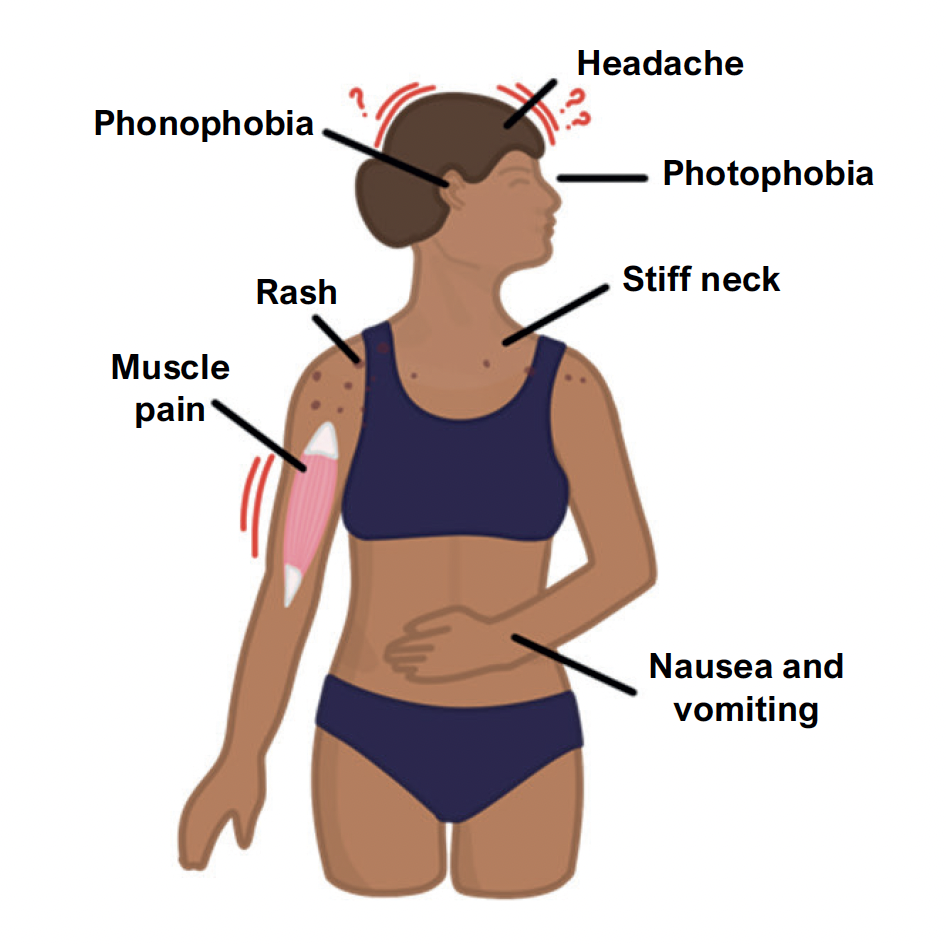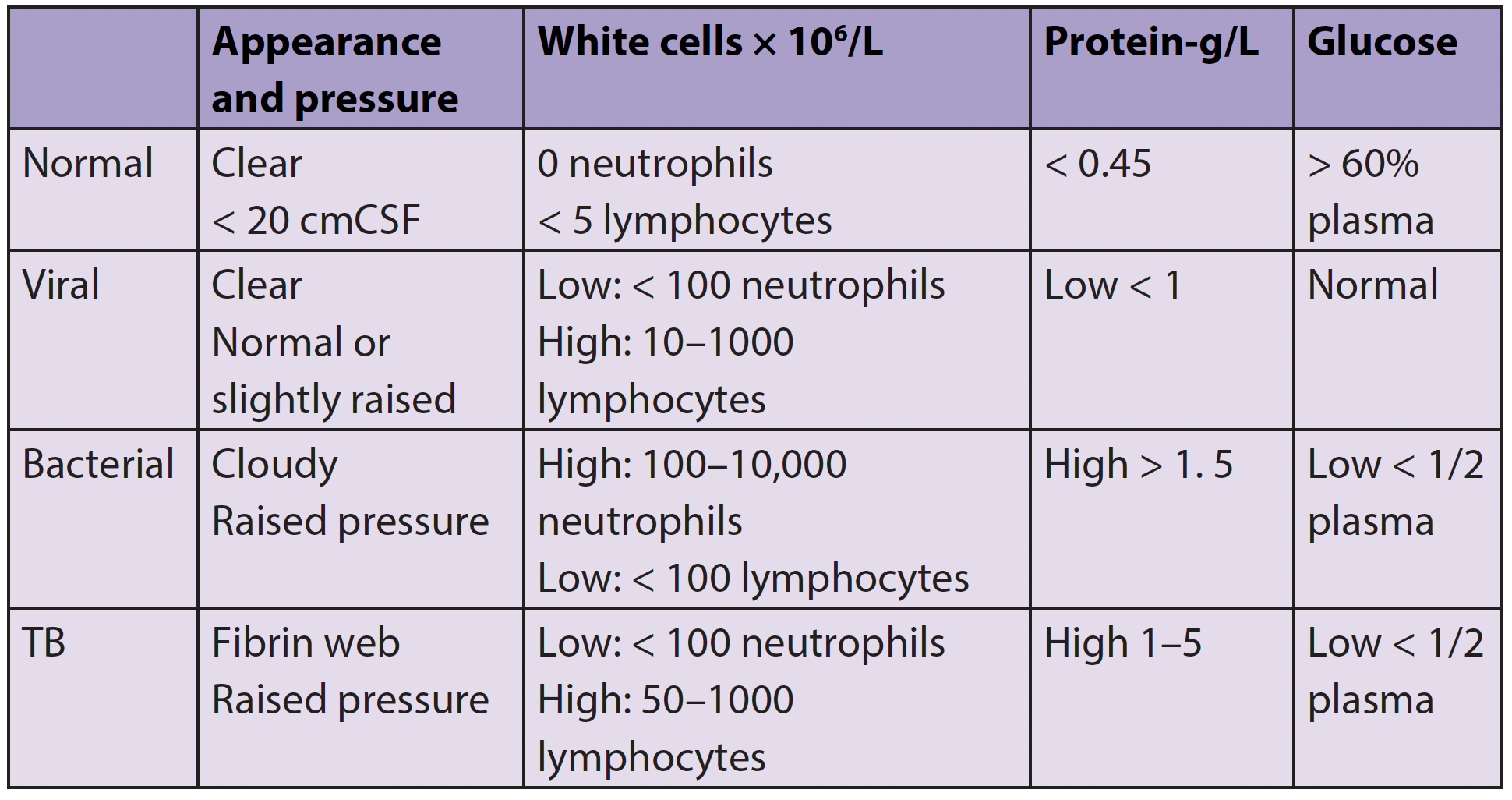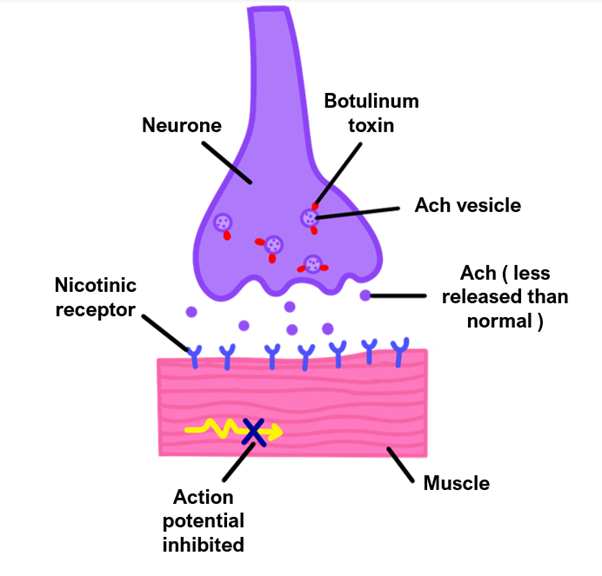Back to: Neurology
Neurological Infections
Meningitis
This is inflammation of the leptomeninges (pia and arachnoid mater) lining the brain.
It is most commonly due to an infectious agent, which can lead to an increase in intracerebral pressure and the development of cerebral oedema.
If left untreated, it can lead to hydrocephalus, hearing loss, fibrosis and death by cerebral herniation.
Causes
Viruses (most common cause), e.g., enterovirus (coxsackie, echovirus), mumps, herpesviruses, measles
Bacterial causes are less common but more serious
In adults, the most common bacteria is N. meningitidis and S. pneumoniae
In babies, group B streptococci and E. coli are common causes

Symptoms
Early – headache, fever, photophobia, nuchal rigidity
Late – altered mental status with low GCS, seizures
Non-blanching maculopapular rash with N. meningitidis infection
Key tests
Blood tests show raised inflammatory markers (WCC, CRP)
Lumbar puncture – analysed for cell microscopy and culture, protein, and glucose
If bacterial – high neutrophils, low CSF glucose, usually raised protein
If viral – increased lymphocytes, normal CSF glucose, low protein
If fungal (atypical) – increased lymphocytes, decreased CSF glucose, high protein

Management
If in GP setting and suspected meningococcal bacteria, give IM benzylpenicillin and send to hospital
If in hospital, take blood cultures first and ideally perform an LP prior to empirical antibiotics and antivirals, unless the LP is contra-indicated
Viral meningitis does not usually require treatment
If bacterial, the mainstay of treatment is empirical antibiotics according to local trust guidelines. An example is below:
If 3 months–50 years, IV ceftriaxone
If < 50 years, IV cefotaxime and amoxicillin
If penicillin allergic, can give chloramphenicol
IV dexamethasone may also be given, especially in pneumococcal meningitis
Encephalitis
This is inflammation of the brain parenchyma. It can occur due to both infectious and autoimmune causes but is most commonly due to is Herpes simplex virus (HSV-1).
It has similar symptoms to meningitis, but also classically affects the temporal and inferior frontal lobes causing focal neurological symptoms.
Symptoms
Meningitis-like symptoms – fever, headache, vomiting, confusion
Neurological features – aphasia (due to speech centers in the temporal lobe), psychiatric symptoms, seizures
Key tests
Lumbar puncture – CSF shows a viral picture (if due to HSV-1)
CSF analysis using PCR shows viral DNA (diagnostic test)
EEG shows lateralised periodic discharges at 2 Hz
MRI – high T2 signal in affected lobes. Can also cause intracerebral haemorrhage
Management
If viral encephalitis, give IV acyclovir
Poliomyelitis
A condition which is spread by the polio virus faeco-orally in contaminated water.
After entering the gut, it can invade the nervous system, causing aseptic meningitis as well as destroying motor neurones leading to irreversible paralysis.
Symptoms
Flu-like prodrome – fever, headache, vomiting, tremor
Leads to LMN symptoms (weakness, paralysis, fatigue)
Can also cause meningitis
Key tests
Detection in stool sample
Management
No cure available. The disease can be prevented by the polio vaccine, with multiple doses required for lifelong protection.
Botulism
This is a condition due to a neurotoxin made by the bacterium Clostridium botulinum.
This is acquired either by contracting the bacteria in wounds or from acquiring the toxin directly from contaminated foods.
The toxin cleaves SNAP proteins, which prevents exocytosis of acetylcholine at the neuromuscular junction causing flaccid paralysis.

Symptoms
Flaccid paralysis, diplopia, ptosis
Can lead to respiratory failure
Autonomic signs – dry mouth, urinary/ cardiac/GI dysfunction
Lack of sensory changes
Management
Botulinum antitoxin, may require ITU for respiratory support
Rabies
A condition which is caused by the lyssavirus, which causes an acute encephalitis with the development of Negri cytoplasmic inclusion bodies in CNS neurones.
It is transmitted in the saliva of infected mammals (dog, bat, fox).
Whilst there is no cure, patients can be vaccinated against rabies.
Symptoms
Flu-like prodrome (headache, fever, general malaise)
Furious rabies – this is characterised by encephalitis causing hydrophobia, water triggering muscle spasms, hypersalivation and hyperactivity
Paralytic rabies – muscle weakness, loss of sensation and paralysis in bitten limb
If left untreated, may progress to coma and death
Key tests
Viral PCR/fluorescent antibody test
Management
Before symptoms have developed, multiple-dose immunisation protocol
If the patient has been immunised, 2 further doses of the vaccine should be given
If not previously immunised, the patient requires vaccination and human rabies immunoglobulin (HRIG)



